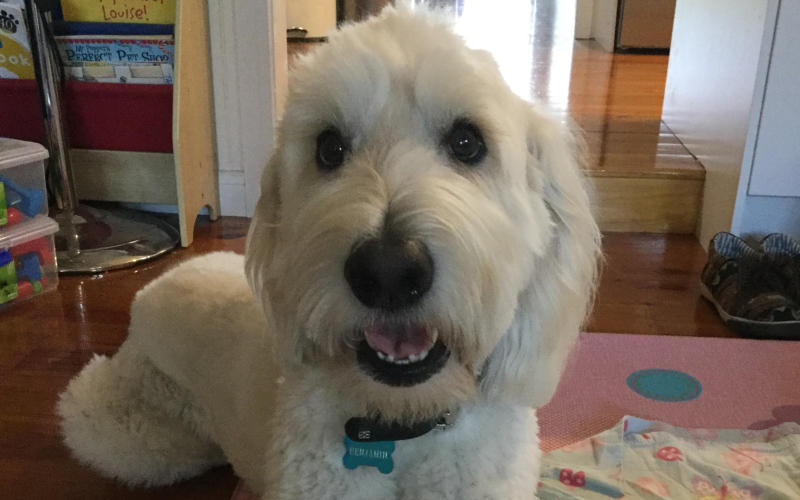A little over four years ago, we brought home a cute little bundle of fluff. We named him Ben. He was a puppy with a lot of expectations on him.
You see, Ben was carefully selected to become a seizure alert and therapy dog for our severely disabled daughter, Miss Z.
We did not go into the decision lightly. Instead, we spent over a year researching and discussing the possibilities with a variety of breeders, service dog organisations and dog trainers as well as several people who used service dogs. We debated if we wanted him to be qualified to accompany Z everywhere or if he would provide his “therapy” services more informally at home. Ben was the product of a lot of research and planning.
The first day, everything went swimmingly and Ben and Z even snuggled up together for a nap. We were thrilled.
However, the next morning, Miss Z became unwell, we had to call an ambulance and she ended up staying in hospital for nearly two weeks. During that time, Ben formed an attachment to Miss Z’s older sister. When she came home, Z was poorly and fragile – which didn’t mix well with a lively, bouncy puppy.
We threw ourselves into Ben’s training and socialisation. We took him out with us as much as possible to get him accustomed to a variety of places and situations. We did rigorous training with him.
However, Miss Z and Ben never formed a bond.
One day, when Miss Z was having a seizure, Ben appeared at my side with a toy – trying to convince me to go play with him. It was then that I knew he would never be a seizure alert dog.
Four years on, Ben is a different sort of therapy dog. Not for Miss Z (she prefers the cat) but for the rest of the family. He provides much needed affection and levity on those days when life is hard and he gets me out for a head-clearing walk every morning, even on the days when I’d rather hide away.
Online and in support groups, there always seems to be a number of people who are considering getting a puppy to train to support their child with a disability.
Our experience with Ben has taught us three important lessons for people considering doing this:
One – not all dogs are cut out to be therapy or service dogs. Some dogs are naturally empathetic and caring while other dogs can be taught to respond, but just don’t have the instinct. Ben is a loving, affectionate, intelligent dog who doesn’t have a mean bone in his body. However, he just doesn’t have that nurturing, empathetic instinct that would have bonded him to Z.
Two – you can’t think of the dog as a pet.
Service dogs are working dogs, not pets. If we had trained Ben to become a service dog, we would have had to stop treating him like a cuddly pet dog all the time and limited his play time with Z’s sister. In addition, we would have had to send him away for a significant period of time for training, as it is quite specialised and time consuming.
Three – be a responsible dog owner. When we finally decided to get a puppy, my husband and I treated it a bit like a marriage. We were getting the dog for better or for worse and until death do us part. Ben was going to be part of the family for the rest of his life, whether or not he became a service or therapy dog. It is a serious commitment.
I often wonder how many people get puppies with high expectations, and when it becomes clear that the dog isn’t suitable or it will take too much time, get rid of it.
Many dogs provide wonderful support, companionship and assistance to children with disabilities. However, it is important to go into the process informed and prepared.
